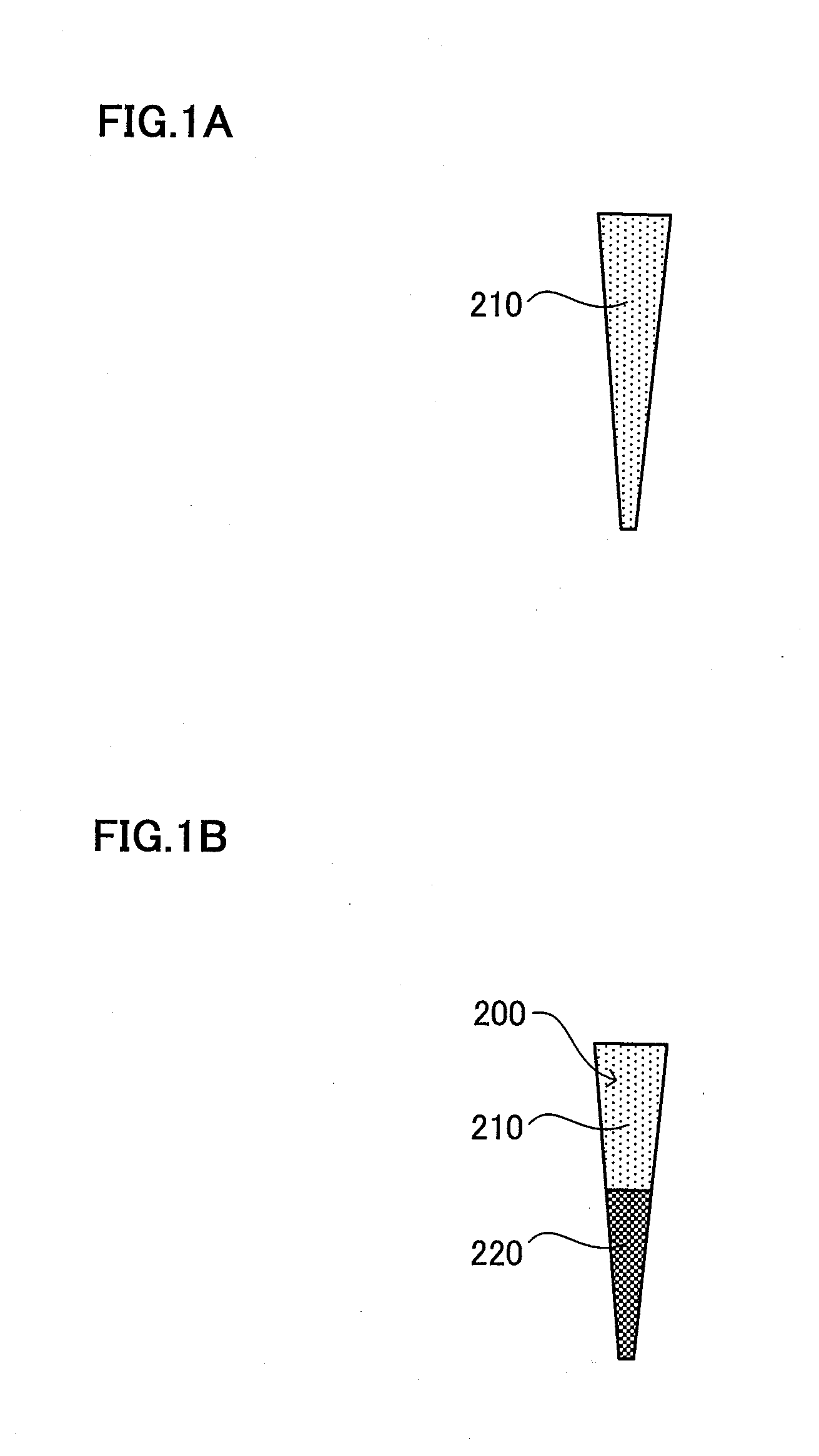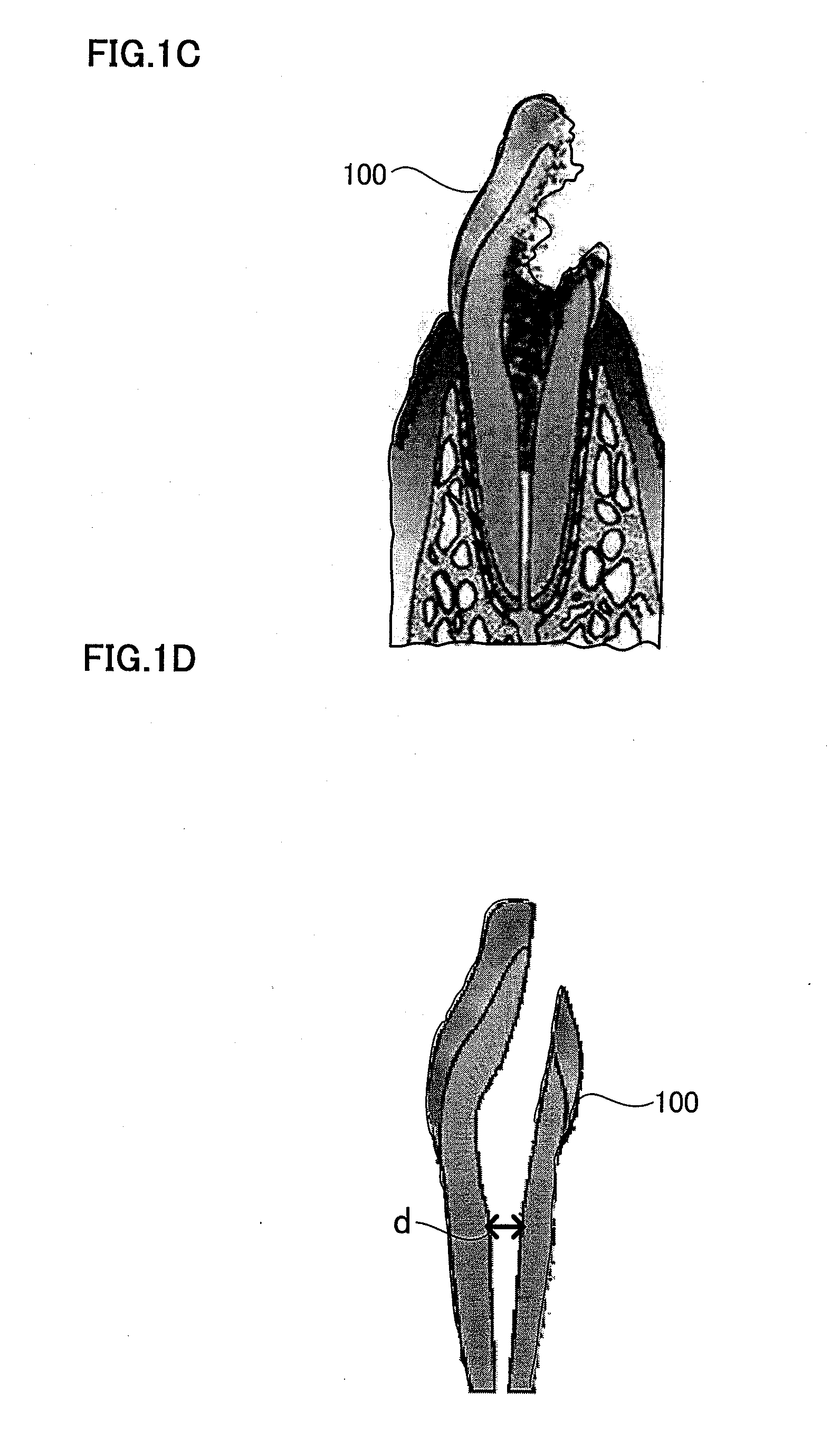Root canal filler and dental tissue regeneration method
a tissue regeneration and root canal technology, applied in the field of root canal filler and dental tissue regeneration method, can solve the problems of incomplete pulpectomy, loss of teeth, and inability to enlarge root canals and root canal fillings, and achieve the effects of restoring dental pulp function, accelerating blood vessel regeneration, and regenerating dental tissu
- Summary
- Abstract
- Description
- Claims
- Application Information
AI Technical Summary
Benefits of technology
Problems solved by technology
Method used
Image
Examples
embodiment 1
[0079]The invention in the present embodiment relates to a dental tissue regeneration method for regeneration of dental tissue in root canal, characterized by injecting an extracellular matrix containing the cells enriched for dental pulp stem cells into the apical side of the root canal after pulpectomy or enlargement and cleaning of an infected root canal. The dental tissues to be regenerated are, for example, blood vessel, nerve, dental pulp, dentin and others in root canal. In the invention in the present embodiment after pulpectomy or enlargement and cleaning of an infected root canal, the dental pulp is removed and disinfected; the apical portion of the root is cut out open (apicoectomized); and a root canal filler is transplanted. In the invention in the present embodiment, a synthetic filler or blood clot is not transplanted into the disinfected hollow root canal, but a scaffold superior in biocompatibility without causing adverse effects and in low immunogenicity with cells...
embodiment 2
[0099]Hereinafter, the dental tissue regeneration method in embodiment 2 will be described with reference to FIGS. 2A to 2C. In a typical example of the method of producing the root canal filler 200, 30 to 40 μl of collagen mixture (mixing rate of type I and III collagens: 1:1) with a chemotactic factor is first absorbed, and 20 μl to 30 μl of collagen mixture with cells including dental pulp stem cells is then absorbed into the tip of Pipetman, to a total volume of 60 μl. Also in embodiment 2, absorption, for example into the tip of Pipetman is preferable to be sufficiently slow so that no air bubble is generated. The internal diameter of the Pipetman tip is preferably smaller. In this way, the root canal filler 200 shown in FIG. 2A is produced. As described above, in the case of the root canal filler 200, cells including dental pulp stem cells 220 are absorbed in the apical part of the root canal, and a chemotactic factor 230 containing at least one of cell chemotactic factor, cel...
example 1
Fractionation and Characterization of Cells
[0110]Porcine tooth germ was extracted and enzyme-digested with collagenase at 37° C. for 1 hour and a half for separation of dental pulp cells; the cells were dispersed in DMEM containing 2% serum at a concentration of 1×106 cells / ml and labeled with 5 μg / ml Hoechst 33342. The cells were then labeled with CD31 and CD146 antibodies at 4° C. for 30 minutes, before analysis by flow cytometry. FIG. 3 shows the analytical results obtained by flow cytometry of the SP cells. The content of the porcine dental pulp-derived SP cells was 0.2% in the entire cells.
[0111]As shown in FIG. 4, three fractions of dental pulp-derived SP cells: CD31− / CD146− fraction; CD31+ / CD146− fraction and CD31+ / CD146+ fraction were obtained. Further fractionation of the SP cells after labeling with CD31 and CD146 antibodies showed CD31− / CD146− SP cells, CD31+ / CD146− SP cells, and CD31+ / CD146+SP cells, representing 50%, 48% and 2%, respectively. The cells were cultured in ...
PUM
 Login to View More
Login to View More Abstract
Description
Claims
Application Information
 Login to View More
Login to View More - R&D
- Intellectual Property
- Life Sciences
- Materials
- Tech Scout
- Unparalleled Data Quality
- Higher Quality Content
- 60% Fewer Hallucinations
Browse by: Latest US Patents, China's latest patents, Technical Efficacy Thesaurus, Application Domain, Technology Topic, Popular Technical Reports.
© 2025 PatSnap. All rights reserved.Legal|Privacy policy|Modern Slavery Act Transparency Statement|Sitemap|About US| Contact US: help@patsnap.com



